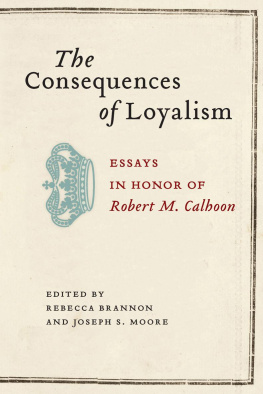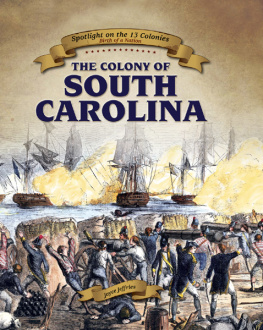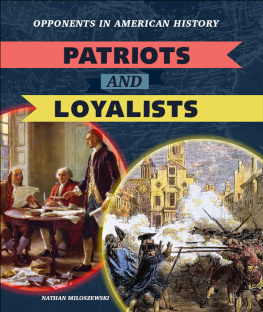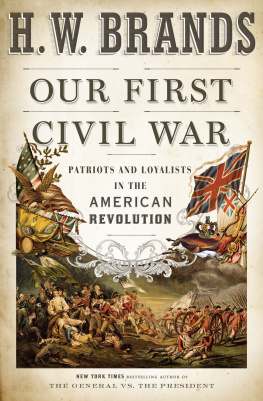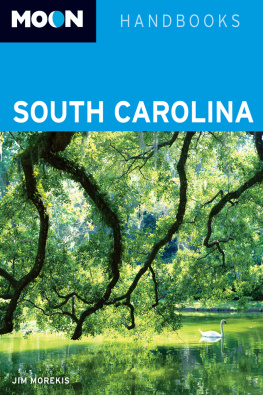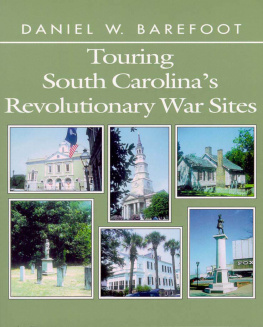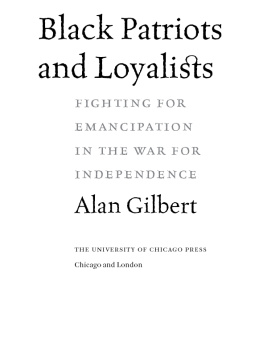2016 University of South Carolina
Published by the University of South Carolina Press
Columbia, South Carolina 29208
www.sc.edu/uscpress
24 23 22 21 20 19 18 17 16
10 9 8 7 6 5 4 3 2 1
Library of Congress Cataloging-in-Publication Data can be found at http://catalog.loc.gov/
ISBN 978-1-61117-668-1 (hardcover)
ISBN 978-1-61117-669-8 (ebook)
Front cover illustration by Pat Callahan; photo of Union Jack
George Clerk/istockphoto.com
Acknowledgments
Years of research inevitably leads to the desire to graciously thank all of the people and institutions that make extended projects such as archive-intensive books possible. And just like the Loyalists I study, sincere apologies are often in order.
I would like to thank my fellow faculty at both James Madison University and the University of South Carolina Aiken for their collegiality. The Interlibrary Loan departments at both institutions were also valuable all along the way. Reference staffers at the South Carolina Department of Archives and History, the South Caroliniana Library, and the South Carolina Historical Society were very helpful. In particular I owe Charles Lesser, Steven Tuttle, and the overworked and harried staff at the South Carolina Department of Archives and History, who have been unfailingly pleasant in the face of constant budget cuts and layoffs. Along the way, I have received valuable research support from the David Library of the American Revolution, the University of Michigan Rackham Graduate School, the Sweetland Writing Center of the University of Michigan, and the graduate fellowships endowment at Amherst College.
Susan Juster shepherded this book through many drafts with her usual insight into what a writer is trying to say, rather than what she would herself do with the material. Thank you so much for your tradition of intellectual generosity. David Hancock provided close reading and analytic comments on multiple drafts. He also reminded me at a crucial moment that the best first book is the done book. Both also generously provided the seemingly constant infusion of recommendation letters that a career in academia requires. The University of Michigan history department was an incredible place to study history. My additional mentors J. Mills Thornton and Susan Scott Parrish were also instrumental in helping shape this project. Of course, I would never have become the historian I am today without the influence of Kevin M. Sweeney, David Blight, and Margaret Hunt, who guided me into the study of history as an intellectual endeavor while at Amherst College.
I certainly owe thanks to the following people, who all read and commented on at least one chapter of the work in progress, for their carefully marshaled thoughts. I owe Skip Stout and the participants in the 2010 NEH and Calvin College seminar on Religion, War, and the Meaning of America, Linda K. Kerber and the participants of the 2009 NEH and New York Historical Society seminar on constitutional history, and the participants in the history department reading group of the University of Mississippi, the American History Workshop at the University of Michigan, and the history department brownbag colloquium at James Madison University. All of these forums provided a chance to get thoughtful and candid feedback on earlier drafts. Tamar Carroll, Kevin Hardwick, Jeffrey Kosoriek, and Marc Lerner read sections of the manuscript as it moved to completion. Robert M. Calhoon, Sheila Skemp, and the anonymous readers for the University of South Carolina Press generously read the entire manuscript and made pointed comments that vastly improved the project. In some cases I did not understand how wise the suggestions were until I was almost done with the manuscript. I owe Alex Moore at the University of South Carolina Press and David Gleeson for recognizing the promise of the manuscript even when it was still a little rough at the edges.
Over the years friends and colleagues in Ann Arbor, Oxford, Aiken, and Harrisonburg have been invaluable. Thanks to Natalia Bowdoin, Tamar Carroll, David Dillard, Chris Dodsworth, Kevin Hardwick, Kaetrena Davis Kendrick, Jeffery Kosoriek, Marc Lerner, Amanda Moniz, Maggie Morehouse, Jeremy Peirce, Alison Sandman, Lars Schumann, Deborah Solomon, Kari and Dulaney Weavertech support, astute readers, drinking buddies, conversationalists, and so much more.
Thanks to my parents, who provided me with the wonderful Amherst education that has allowed me to flourish. Thanks too for the supportive calls, and good company. Joan and Anthony Brannon encouraged my joy in intellectual pursuits for a long time, and both enjoy history themselves. My father would probably say I study the wrong war, but I have never doubted that they are always in my corner. My sister, Hillary Brannon, was a history major herself and is always supportive.
And thanks so much to Joan Anderson, for making it possible and for making it worthwhile. She has moved twice with me as I pursue the academic life. She was even willing to move to Aiken without ever seeing it, which seems the very definition of love. Her good humor always makes our days enjoyable, and her warm smile always brings joy. Seth Anderson-Brannon arrived as I finally saw the light at the end of the tunnel with this book. He too makes life sweeter and more intenselchaim, sweet Seth. Mommy can play choo-choo now.
A Note on Terms
Throughout this work I use the term Loyalist in preference to Tory to refer to people who were associated with the British cause during the American Revolution. I maintain the use of the word Tory in quotations to render the strong hatreds of the time intact. I further use Loyalist even though many of the people I talk about were probably not motivated by ideology at all. On the other side, unlike many recent historians, I have chosen to use Patriot to refer to those who supported the cause of American independence during the war. Many recent writers have used Whig instead so as to avoid suggesting that Loyalists were not themselves patriotic. While I agree that many Loyalists were brave, patriotic people, I have maintained the older use of Patriot in the service of clearly delineating the differences between the two sides without unduly emphasizing any specific political ideology such as the Whig cause might suggest. In fact strongly ideological South Carolinians were rare.
I use Loyalist and Patriot to mean white Loyalists and Patriots exclusively throughout most of this book. I am well aware that thousands of Africans and African Americans supported the Loyalist cause and are usually identified as the black Loyalists. In addition several southern Native American tribes supported the Loyalist cause as well. However the majority of this book deals with the intertwining fates of white Patriots and Loyalists after the war. White Patriots and Loyalists united in ignoring black and Native American participation and interests in the fate of South Carolina. Therefore in the interests of clarity and concision, I have simply avoided racial and ethnic identifiers when the context makes it clear I mean white folks. In places where such identities might be in doubt, such as discussions of the war itself, I use


